
Alan Curtis Kay is an American computer scientist. He has been elected a Fellow of the American Academy of Arts and Sciences, the National Academy of Engineering, and the Royal Society of Arts. He is best known for his pioneering work on object-oriented programming and windowing graphical user interface (GUI) design.
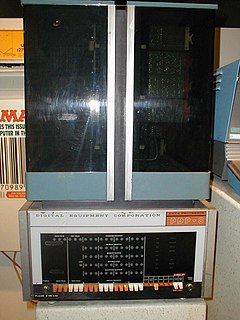
A minicomputer, or colloquially mini, is a class of smaller computers that was developed in the mid-1960s and sold for much less than mainframe and mid-size computers from IBM and its direct competitors. In a 1970 survey, The New York Times suggested a consensus definition of a minicomputer as a machine costing less than US$25,000, with an input-output device such as a teleprinter and at least four thousand words of memory, that is capable of running programs in a higher level language, such as Fortran or BASIC.
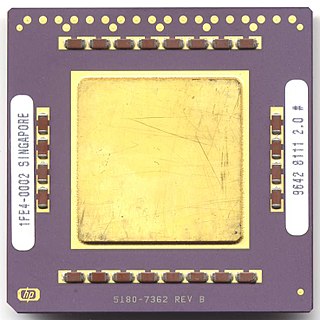
PA-RISC is an instruction set architecture (ISA) developed by Hewlett-Packard. As the name implies, it is a reduced instruction set computer (RISC) architecture, where the PA stands for Precision Architecture. The design is also referred to as HP/PA for Hewlett Packard Precision Architecture.

Silicon Valley is a region in the southern part of the San Francisco Bay Area in Northern California that serves as a global center for high technology and innovation. It corresponds roughly to the geographical Santa Clara Valley. San Jose is Silicon Valley's largest city, the third-largest in California, and the tenth-largest in the United States; other major Silicon Valley cities include Sunnyvale, Santa Clara, Redwood City, Mountain View, Palo Alto, Menlo Park, and Cupertino. The San Jose Metropolitan Area has the third-highest GDP per capita in the world, according to the Brookings Institution.
Very long instruction word (VLIW) refers to instruction set architectures designed to exploit instruction level parallelism (ILP). Whereas conventional central processing units mostly allow programs to specify instructions to execute in sequence only, a VLIW processor allows programs to explicitly specify instructions to execute in parallel. This design is intended to allow higher performance without the complexity inherent in some other designs.
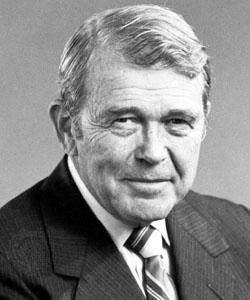
William Redington Hewlett was an American engineer and the co-founder, with David Packard, of the Hewlett-Packard Company (HP).

Stanford Research Park (SRP) is a technology park established in 1951 as a joint initiative between Stanford University and the City of Palo Alto. It has more than 150 companies, including Hewlett-Packard, Tesla Motors, TIBCO and VMware; previously, it housed high-profile companies, including Steve Jobs's NeXT Computer, Xerox PARC, and Facebook. It has been called "an engine for Silicon Valley" and "the epicenter of Silicon Valley".
NonStop is a series of server computers introduced to market in 1976 by Tandem Computers Inc., beginning with the NonStop product line, which was followed by the Hewlett-Packard Integrity NonStop product line extension. It is currently offered by Hewlett Packard Enterprise since Hewlett-Packard Company's split in 2015. Because NonStop systems are based on an integrated hardware/software stack, HPE also developed the NonStop OS operating system for them.

CORDIC, also known as Volder's algorithm, or: Digit-by-digit methodCircular CORDIC, Linear CORDIC, Hyperbolic CORDIC, and Generalized Hyperbolic CORDIC, is a simple and efficient algorithm to calculate trigonometric functions, hyperbolic functions, square roots, multiplications, divisions, and exponentials and logarithms with arbitrary base, typically converging with one digit per iteration. CORDIC is therefore also an example of digit-by-digit algorithms. CORDIC and closely related methods known as pseudo-multiplication and pseudo-division or factor combining are commonly used when no hardware multiplier is available, as the only operations it requires are additions, subtractions, bitshift and lookup tables. As such, they all belong to the class of shift-and-add algorithms. In computer science, CORDIC is often used to implement floating-point arithmetic when the target platform lacks hardware multiply for cost or space reasons.
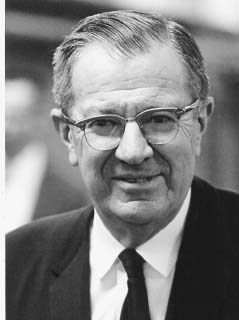
Frederick Emmons Terman was an American professor and academic administrator. He is widely credited as being the father of Silicon Valley.

Robert Stanley "Bob" Barton was recognized as the chief architect of the Burroughs B5000 and other computers such as the B1700, and a co-inventor of dataflow. Barton's thinking has been broadly influential. As one example, Barton influenced the systems and higher-level computer language thinking of Alan Kay who went on to further develop object-oriented programming, co-design Smalltalk, and develop concepts key to modern GUI systems built into the Macintosh and later Microsoft Windows.

HP Labs is the exploratory and advanced research group for HP Inc. HP Labs' headquarters is in Palo Alto, California and the group has research and development facilities in Bristol, UK. The development of programmable desktop calculators, inkjet printing, and 3D graphics are credited to HP Labs researchers.
Justin R. Rattner is a retired Intel Senior Fellow, Corporate Vice President and former director of Intel Labs. Previously, he served as the corporation's Chief Technology Officer, where he was responsible for leading Intel's microprocessor, communications and systems technology labs and Intel Research.
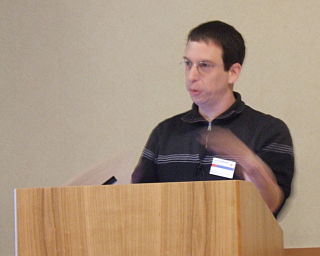
Dan Boneh is an Israeli-American professor in applied cryptography and computer security at Stanford University.
Mehdi Jazayeri is the founding dean of the faculty of informatics of the Università della Svizzera italiana in Lugano, Switzerland, and author of several textbooks on computer software. He was awarded the Influential Educator Award in 2012 by the ACM SIGSOFT.
Concurrent Collections is a programming model for software frameworks to expose parallelism in applications. The Concurrent Collections conception originated from tagged stream processing development with HP TStreams.

The Scientific Computing and Imaging (SCI) Institute is a permanent research institute at the University of Utah that focuses on the development of new scientific computing and visualization techniques, tools, and systems with primary applications to biomedical engineering. The SCI Institute is noted worldwide in the visualization community for contributions by faculty, alumni, and staff. Faculty are associated primarily with the School of Computing, Department of Bioengineering, Department of Mathematics, and Department of Electrical and Computer Engineering, with auxiliary faculty in the Medical School and School of Architecture.
Zhang Hongjiang is a Chinese computer scientist and executive. He served as CEO of Kingsoft, Managing Director of Microsoft Advanced Technology Center (ATC) and Chief Technology Officer (CTO) of Microsoft China Research and Development Group (CRD).
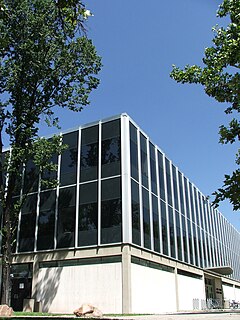
The School of Computing is a school within the College of Engineering at the University of Utah in Salt Lake City, Utah.
Norman Paul Jouppi is an American computer scientist.












